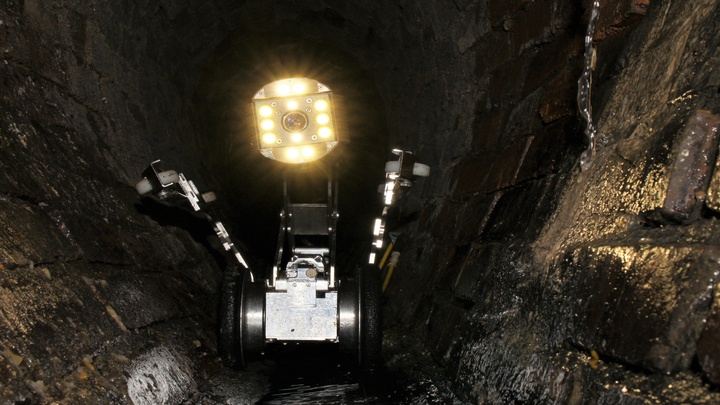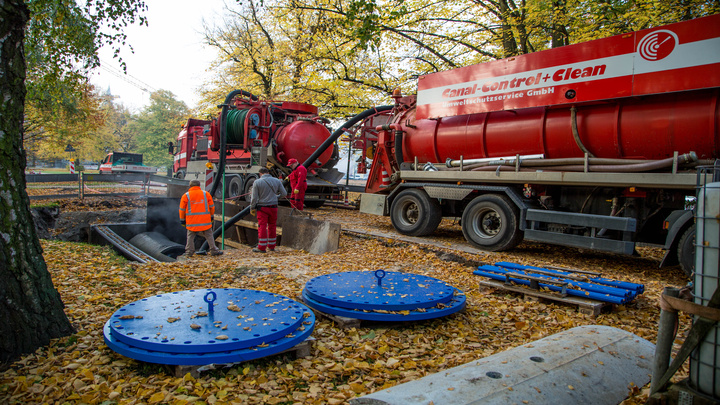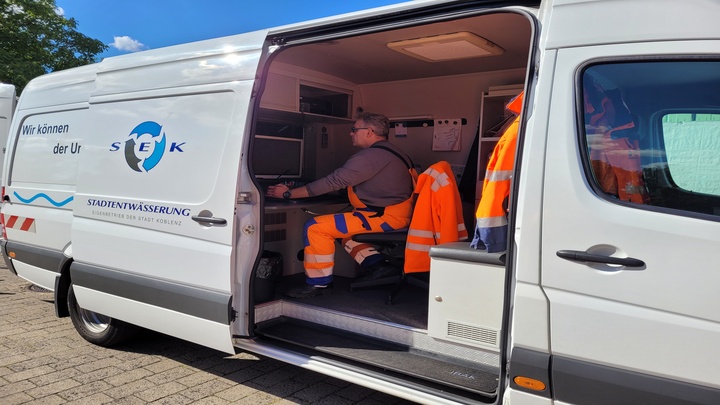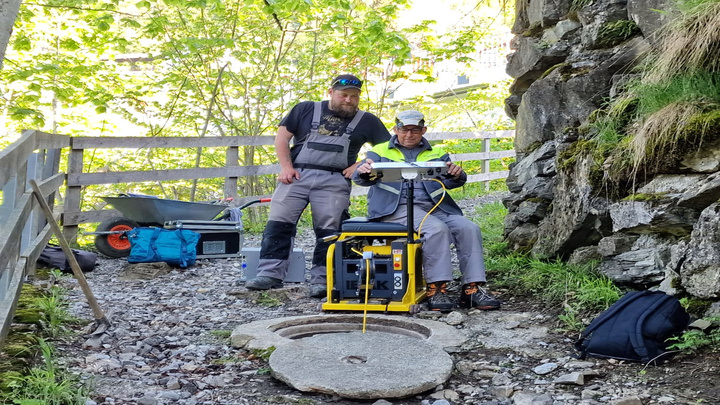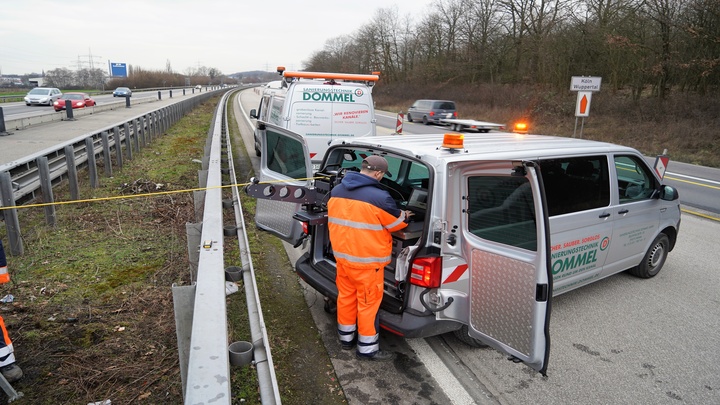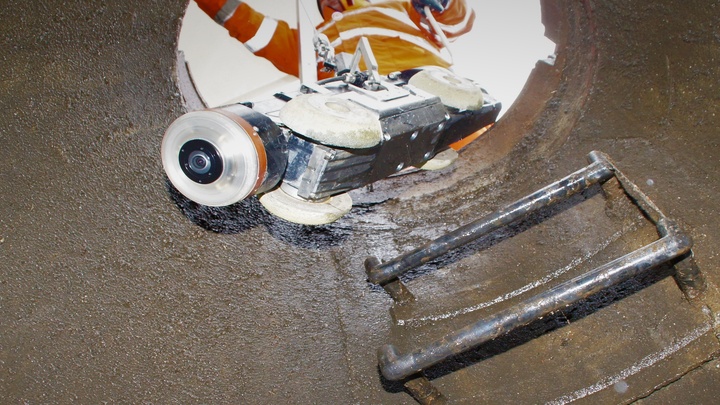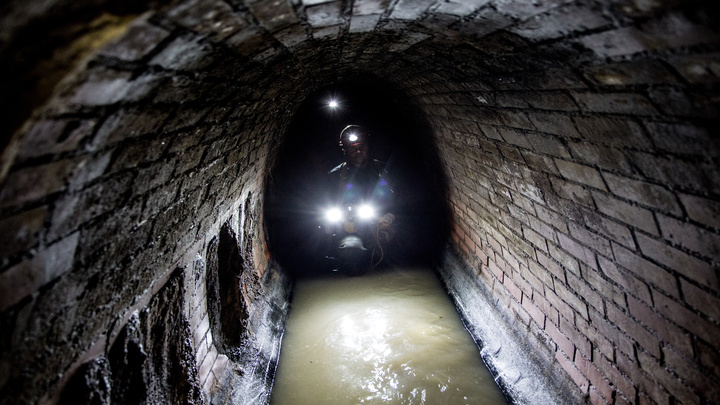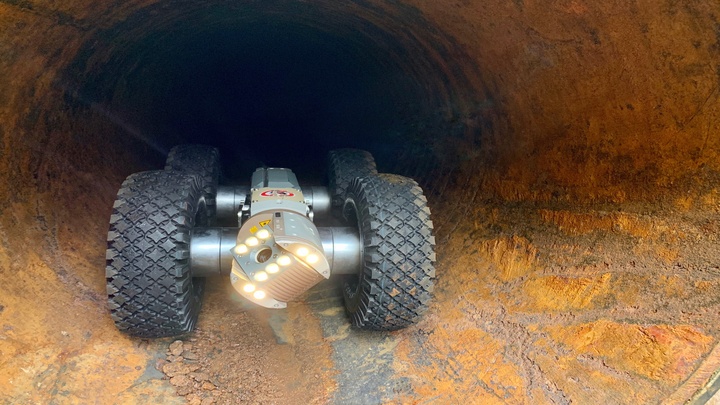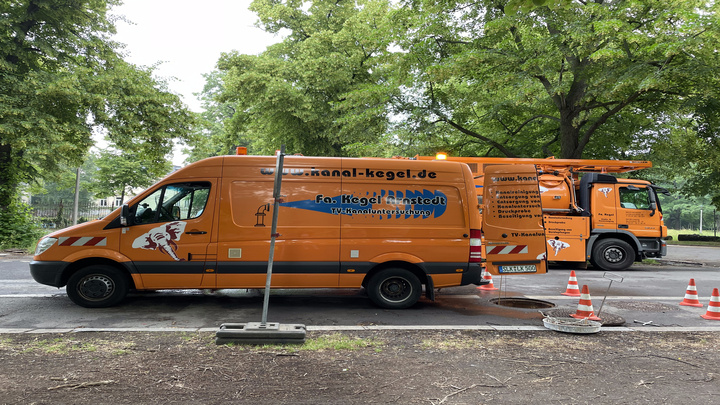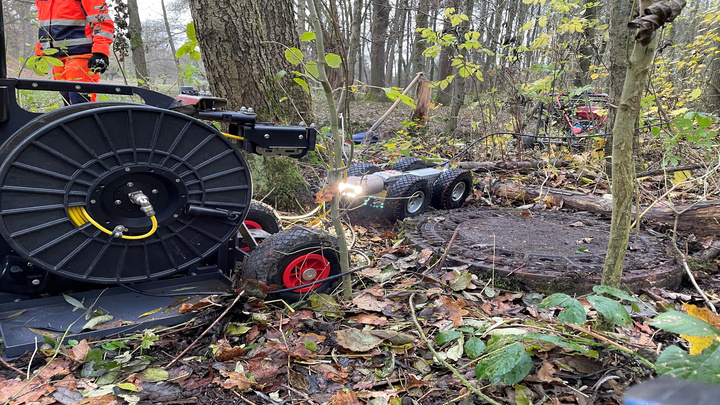Continuous deformation measurement in sewers with ovoid cross-sections
Job
The city of Bruchsal, some 20 kilometres north of Karlsruhe in Baden-Württemberg, operates a wastewater treatment plant with a design capacity of 80,000 population equivalents, 19 lift pump stations, stormwater overflow basins and a sewer network of 265 km as a public facility. The Bruchsal sewage department commissioned VOGEL Ingenieure with planning the rehabilitation of combined sewers with the object of avoiding replacement for as long as possible. The measure comprised, among other things, 20 non-man-size concrete egg-shaped reaches with nominal dimensions from EI 250/375 to 500/750 with a total length of about 985 metres. In view of recent experience with the use of pipe liners, VOGEL Ingenieure recommended that the real profile dimensions should be determined in the course of the optical inspection, which was required anyway.
Challenge
Usually, the nominal data documented in the sewer system operator's as-built data are used in non-man-size pipes with ovoid cross-sections for the fabrication of liners. This data usually originates from the transfer of information from the construction plans, in the present case from a complete survey including the connected laterals. In addition to the as-built data, local measurement at manholes has established itself as a standard. However, with point measurements at the pipe ends, varying inside diameters over the run of the sewer reach are not detected and thus not considered during the further procedure. At best, erratic changes in the nominal diameter over the run of the reach are taken into account for pipe liner design. These changes of diameter can usually be detected during optical inspections. However, changes of diameter can also be gradual, so that they are not visible to the naked eye. But the most accurate as possible knowledge of the actual profile is relevant for the fabrication of the liners under the stipulation that a technical service life of at least 50 years is to be achieved.
The wastewater facilities concerned are located in public traffic areas in the heavily frequented area of the city centre, so that permits under road traffic legislation and, in coordination with the highway authorities, traffic safety measures were necessary. In order to obtain information of sufficiently good quality, the sewers to be inspected were taken out of service and the outflows diverted. The sewer reaches were cleaned in advance by high-pressure jetting. The results of the TV inspection of 2007, digital site plans and data from the manhole inspections were used as initial data.
Solution
On site in Bruchsal were 2 employees with a cleaning vehicle and 2 employees with an inspection vehicle equipped with advanced technologies from IBAK Helmut Hunger GmbH & Co. KG. The optical inspection was performed with the ORPHEUS 2 which enables deformation measurements over the entire length of the sewer reach thanks to the lasers integrated on the fully rotatable camera head. The laser scan was performed immediately after the optical inspection while the camera was on its way back from the target manhole to the start manhole. The camera system moved back at a steady rate of about 5 to 7 cm/sec until the length counter indicated 0.0 m. The inspector started the recording for the continuous profile analysis via the IKAS evolution software. Since the lasers are integrated into the inspection camera, the laser measurement system did not have to be mounted in front of the camera with a bracket. This eliminates additional mounting work for the inspector and the recording process for profile analysis fits perfectly into the TV inspection workflows. The optical inspection and simultaneous continuous measurement of all 20 sewer reaches with ovoid cross-sections took a total of 30 working hours.
Result
Since the planning of the Bruchsal sewage department included the rehabilitation of sewer reaches with ovoid cross-sections by means of a lining procedure, information from the laser deformation measurement was decisive for the dimensioning of the liners. In 6 of the 20 objects inspected, the size of the ordered fibre glass liners was corrected upwards because the stretching capability of the product in question would not have been sufficient to fit the actual dimensions if liners of standard size were used. By determining the measured maximum and minimum circumference over the entire length of each sewer reach, it was possible to select liners whose stretching capability optimally matched the actual profile dimensions.
"If a profile dimension measurement is not performed, this can present considerable risks to the technical service life of the rehabilitation solution. The follow-up costs are likely to far exceed the costs of proper rehabilitation preparation with profile analysis," Vogel emphasizes. The quality that can be achieved by the technology available on the market should also be applied; however, this must also be stipulated in the tenders for implementation of such measurements and the desired form of the data must be precisely specified. In order to avoid time delays and supplementary requirements, profile measurement and data evaluation in preparation for a rehabilitation measure should already be carried out at the planning stage, in the planner's further experience.
"If pipe liners are to achieve and at best outlast the average technical service life of 50 years, a tailor-made liner is needed for the specific sewer section. With the ORPHEUS 2, measurements can be made in pipes with both circular and ovoid cross-sections in a single operation together with the inspection," says Vogel, emphasizing the importance of the technical prerequisites. In conclusion, he states that "the experience of the last 18 months with consistent measurement of profile dimensions in the course of rehabilitation planning shows that hardly any sewer is the size it says on the outside."
Company introduction

The engineering office VOGEL Ingenieure GmbH exists since 1999 and is represented at the locations in Kappelrodeck, Bad Krozingen and Ditzingen.
The office is characterized by its high level of expertise in remediation planning. Related services such as as-built documentation, needs analysis and condition assessment are also part of the portfolio.




